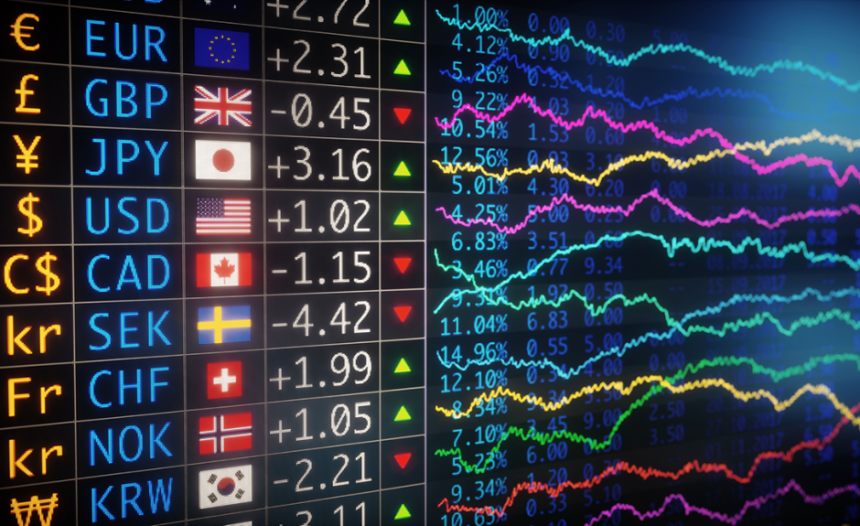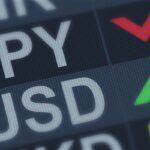The US announced that the 25% steel and aluminum tariffs will not be effective for a month (March 12), and this gives the impression that they are a negotiating tactic, which may help explain why there has been a muted reaction. Some observers argue that the broader steel tariffs than in 2018 are meant to crackdown on the re-export of Chinese steel. Nevertheless, it will not set right with US allies. The most immediate threat to the stability of the G10 countries is not coming from China or Russia but the US. In his first term, Trump granted many exemptions to the steel and aluminum tariffs and Biden followed suit. It has yet to be seen what happens this time. The dollar is narrowly mixed against the G10 currencies today, +/- 0.15%. Among emerging market currencies, the Indian rupee sticks out with its 0.75% gain, on the back of suspected intervention. Most emerging market currencies are lower but a few from central Europe are a little firmer.
Equities are struggling today. Most for the large markets in the Asia Pacific region fell, led by a 1% loss in Hong Kong. South Korea, Taiwan, and Australia managed to post modest gains. Europe’s Stoxx 600 is off fractionally, and US S&P 500 and Nasdaq futures are off 0.4%-0.6%. Bonds are also under pressure today. Benchmark yields in Europe are about five basis points higher, though UK Gilts are holding in better with a 2-3 bp increase, which is the same as the US. That puts the US 10-year Treasury yield around 4.52%. Gold set a new record a little below $2943 but has reversed low to test the $2900 area. We expect buying to emerge on the pullback. March WTI is higher for the third consecutive session. It its near $73.30 now after reaching $70.40 before the weekend. The next technical target is near $73.85.
USD:
The US tariff threat provocations continue to dominate the mindshare of market participants. The US steel and aluminum tariffs are set to go into effect March 12. The month ostensibly allows time to negotiate but may help explain the muted market reaction. The potential supply shock that the tariffs represent alongside the economy that still is growing above trend will reinforce Fed Chair Powell’s message semi-annual congressional testimony Wednesday and Thursday: Patience, which means in the current context, a reluctance to reduce the restrictiveness of monetary policy further after cutting the interest rate target by 100 bp in the last four months of 2024. Shortly before Powell testifies tomorrow, the January CPI will be reported. It looks to be largely steady on a year-over-year basis. The Dollar Index is consolidating in a narrow range so far today between about 108.20 and 108.45. A move above 108.60 in the Dollar Index would help lift the tone. On the other hand, a break of the 107.70 would signal continued consolidation. Still, on balance, if participants move to minimize their biggest regret, losing money on a long dollar position, given the tariffs and policy divergence seems less regrettable than losing money being short dollars in this environment.
EURO:
The euro bounced from around $1.0140 last week to about $1.0440. Between the reciprocal tariff threat and the steel and aluminum tariffs, the euro pulled back to roughly $1.0280. It is holding above there today, trading in a range of about $1.0290-$1.0325. The (61.8%) retracement of last week’s bounce is near $1.0255. On the upside, $1.0360-80 may be difficult to resurface. While the EU is threatening to retaliate against the US tariffs, the UK indicated it would not join in the effort. The economic calendar is light this week, and what data there is for last December, which for many participants may be too old to have much impact, especially given the release of Q4 GDP.
CNY:
Beijing has shown no desire weaken the yuan to offset or blunt US tariffs. One of the most important ways the PBOC manages the exchange rate is through the setting of the daily reference rate. Since January 21 (interrupted by the six-day Lunar New Year holiday) the fix has been steady in a CNY7.1696-CNY7.1708 range. Today, fix was at CNY7.1716, the highest since January 20. Yet, despite the stronger dollar reference rate, the greenback has been confined to yesterday’s range against the offshore yuan (~CNH7.3025-CNH7.3175). The dollar reached a four-day high against the offshore yuan yesterday. The middle of last week’s range is closer to CNH7.3215. Above there, initial potential may extend toward CNH7.3330-50.
JPY:
The greenback has spent most of the past three sessions in a JPY151.00-JPY152.80. It remains well within that range today (~JPY151.65-JPY152.20). We suspect that higher US Treasury yields will help the lift the greenback after it has pulled back by 5% over the past month. The 10-year US yield is trying to re-establish a foothold back above its former shelf near 4.50%. Japan has a light economic calendar until next Monday with its first estimate of Q4 GDP. The composition of growth may change, but the pace looks similar to Q3 24 of about 0.3% quarter-over-quarter. Despite what was touted as a successful meeting between Japanese Prime Minister Ishiba and President Trump, which apparently played well to the domestic audience too, did not prevent the steel and aluminum tariffs from being applied to Japanese producers.
GBP:
Sterling slipped further today and recorded a six-day low slightly below $1.2335. It eased below the (61.8%) retracement of sterling’s bounce off the February 3 low near $1.2365. It has stabilized and is testing that area in late morning turnover. Yesterday, sterling settled below the 20-day moving average for the first time since January 23. It is near $1.2385 today. At the same time, a trendline drawn off the mid-January, late January, and early February lows comes in today near $1.2300 today. The economic calendar features December and Q4 GDP on Thursday.
CAD:
The US dollar has forged a near-term shelf near CAD1.4270. The Canada may have won a reprieve for the tariff threat from the fentanyl and immigration “threat” but its vulnerability to new tariffs on steel and aluminum, from which it has secured an exemption from during Trump’s first term, weighed on the Canadian dollar. It fell to a four-day low yesterday, and the greenback nicked the 20-day moving average near CAD1.4375. It is holding a narrow range of about CAD1.4315-CAD1.4340 today. Polls for the Liberal Party leadership contest, which will be decided next month, puts former Bank of Canada and Bank of England governor Carney ahead. A strong showing may help garner parliamentary support for the minority government and forestall what had seemed like an imminent election. It must be held, in any event by late October.
AUD:
After falling to a four-day low near $0.6230 on the US tariff threat, the Australian dollar rebounded a traded up to $0.6285 in the North American session yesterday. Nearby resistance is near $0.6300, which stymied last week’s recovery. Even then, a move above last month’s high (~$0.6330) is needed to lift the technical tone. It is in about a quarter-cent range today above $0.6260. Help is unlikely to come from Australian data, which is light this week. The focus is on the central bank meeting next week and the swaps market is confident (~93%) of a hike, despite the uncertainty around the US tariff threat. Prime Minister Albanese indicated that the US would consider an exemption from the metals tariff, but so far there no exemptions were announced.
MXN:
The peso weakened in response to the US steel and aluminum tariffs, and the prospect of carving out an exemption, as it did when Trump first levied the tariff in his first term, seems slimmer. The dollar appears poised to move higher against the peso but is trading quietly now in about a MXN20.5950- MXN29.66 range. A move above the MXN20.70 area could see the MXN20.80 area in short order. The disappointing Q4 GDP (-0.6% quarter-over-quarter) steals the thunder from today’s December industrial output report. Still, industrial output has been alternating between gains and losses since the start of H2 24. A small rise in November was likely offset by a decline in December. The median forecast in Bloomberg’s survey is for a 0.6% decline. Last week, the central bank kept the door open to another 50 bp rate cut at next month’s meeting, but the market is not convinced, and the swaps market is discounting a quarter-point cut.
Source: marctomarket.com/








